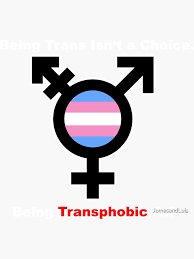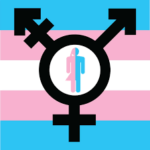The journey of transitioning to a female identity is a deeply personal and transformative experience for many individuals. The desire to embrace a female identity often stems from a profound understanding of oneself, leading to a quest for authenticity and fulfillment. This article aims to provide insights into the emotional, social, and medical aspects of this journey, offering support and guidance to those considering or undergoing a transition.
Understanding the Desire to Transition to Female Identity
For many, the desire to transition to a female identity is not a fleeting thought; it’s an intrinsic part of who they are. This longing typically arises from a disconnect between one’s gender identity and the sex assigned at birth. The feeling of being trapped in a body that doesn’t align with one’s true self can lead to significant emotional distress, prompting individuals to explore their gender identity further. Recognizing this yearning is often the first step toward understanding and action.
Exploring what it means to identify as female can be a complex process. It involves questioning societal norms, personal beliefs, and the expectations placed upon individuals based on their assigned gender. This exploration often leads to the realization that gender is a spectrum, and identifying as female may not solely be about physical attributes but encompasses an entire experience of self-expression, community, and personal truth.
Exploring the Emotional Journey of Gender Transition
Embarking on the emotional journey of transitioning can be both exhilarating and daunting. Many individuals experience a myriad of feelings as they confront their identities, including joy, fear, anxiety, and hope. The process often requires deep introspection and self-reflection, as individuals confront societal pressures and personal expectations. It’s important to allow oneself the space to feel these emotions fully, as they are vital in shaping the journey ahead.
Moreover, individuals may face challenges related to acceptance, both from themselves and others. The emotional rollercoaster can sometimes lead to feelings of isolation and loneliness. However, many find a sense of relief and empowerment as they move closer to their authentic selves, ultimately fostering resilience. Recognizing that these emotional stages are natural can help individuals navigate their path more effectively.
Key Differences Between Gender Identity and Biological Sex
At its core, gender identity refers to an individual’s deeply held sense of their gender, which may or may not correspond with the sex assigned at birth. Biological sex, on the other hand, typically involves physical attributes such as chromosomes, hormone levels, and reproductive/sexual anatomy. Understanding the distinction is crucial in fostering a more inclusive dialogue about gender, as it emphasizes the complexity of human identity.
This differentiation is significant because it highlights that gender is not simply binary. Many people fall somewhere on the gender spectrum, and their experiences may involve fluidity or a mix of different gender identities. Recognizing these nuances can promote greater understanding and acceptance, allowing individuals to express themselves authentically without being confined by traditional gender norms.
Steps to Take When Considering a Transition to Female
Deciding to transition to a female identity is a significant choice that merits careful consideration. The first step often involves self-reflection, allowing individuals to explore their feelings and motivations. Journaling, engaging in conversations with trusted friends, or seeking professional counseling can be beneficial during this period. Understanding one’s motivations can provide clarity and confidence as they navigate their next steps.
Once an individual feels ready, developing a plan can be helpful. This plan might include researching gender clinics, support groups, or mental health professionals specializing in gender identity issues. Setting realistic goals, whether they involve social, medical, or legal changes, can create a roadmap for the journey ahead, helping to alleviate some of the anxiety surrounding the transition process.
Support Systems: Finding Your Community and Resources
Building a solid support system is essential for individuals considering or undergoing a gender transition. Finding a community that understands the unique challenges and triumphs of transitioning can provide a sense of belonging and affirmation. This community can be found online or in local support groups, where shared experiences create an environment of empathy and encouragement.
Utilizing available resources is equally important. Various organizations and hotlines offer support, guidance, and education for individuals navigating their gender identity. Connecting with mental health professionals who specialize in gender issues can also provide invaluable support, helping individuals explore their feelings and navigate the complexities of their journey.
Medical Options: Hormones, Surgery, and Beyond
For those seeking medical transition to align their physical appearance with their gender identity, several options are available. Hormone replacement therapy (HRT) is commonly pursued, involving medications that help develop secondary female characteristics, such as breast growth and fat redistribution. Individuals should consult experienced medical professionals to discuss their options, potential side effects, and what to expect during the process.
Surgical options may also be considered, ranging from breast augmentation to gender-affirming surgeries. Each individual’s journey is unique, and choices regarding medical interventions should be made with careful consideration and consultation with healthcare providers. It’s important to remember that transitioning is a deeply personal process, and individuals should feel empowered to make decisions that best align with their identity.
Navigating Social Changes After Transitioning to Female
Transitioning to a female identity often brings about significant social changes. These can include alterations in relationships, workplace dynamics, and social interactions. While some may find an overwhelming sense of acceptance and support, others may face challenges, such as misunderstandings or rejection. Preparing for these changes can help individuals navigate their new social landscape with confidence.
Communication plays a crucial role in this phase. Being open and honest with friends, family, and colleagues about one’s transition can foster understanding and support. Additionally, practicing self-advocacy helps individuals assert their identity and boundaries, creating spaces where they feel safe and validated. Embracing these changes as part of one’s journey can lead to deeper connections and a more authentic social life.
Celebrating Your New Identity: Embracing Authenticity
Once the transition to a female identity is underway, it’s essential to take the time to celebrate this new chapter. Embracing one’s authenticity can be a powerful affirmation of self-love and acceptance. Many find joy in expressing their true selves through fashion, hobbies, and social interactions, all of which contribute to a more fulfilling life.
Finding moments to celebrate milestones, whether big or small, can also enhance the experience. This could involve participating in community events, sharing one’s journey with others, or simply taking time for self-care. Each step taken toward embracing a female identity is worth celebrating, as it signifies courage, resilience, and the pursuit of authenticity.
Transitioning to a female identity is a significant and deeply personal journey that encompasses various emotional, social, and medical aspects. By understanding the desire to transition, exploring feelings, and seeking support, individuals can navigate their path more effectively. Ultimately, the journey toward authenticity is one of empowerment, self-discovery, and celebration. Embracing your true self is not only a personal triumph but also an invitation to inspire others along their journeys.


